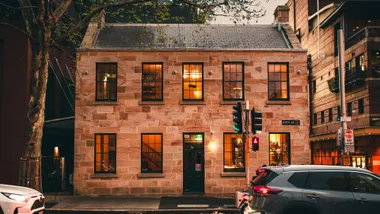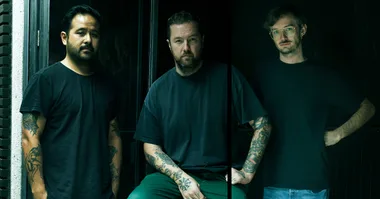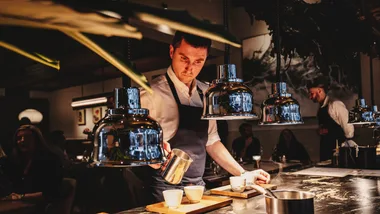Tabasco sauce is a favourite condiment the world over with everyone from the US military to astronauts. Colman Andrews goes to the source of the sauce.
Travelling in Europe in the late 19th century, the great American novelist Samuel Langhorne Clemens, better known as Mark Twain, compiled a list of the foods he missed from back home, some 80 items that to him represented the best of his native land’s culinary bounty. When I discovered Twain’s list not long ago – in his book A Tramp Abroad – I started thinking about what edibles I might pine for under similar circumstances, and by extension which ones would best define the modern-day taste, in both senses of the word, of America. Just for fun, I started to make up a list of my own – and then realised that the list might make the basis for an interesting book, identifying and celebrating the riches of our nation’s diet.
What came into focus for me as I wrote down one food after another was, first of all, the extent to which the American larder has found room for the flavours of the world. Bratwurst, corn tortillas and miso paste are as much a part of what we eat as cranberries, smoked turkey and grass-fed steak. I was reminded that we do love our junk food (Fritos, fried pork rinds, Junior Mints), but we also produce sophisticated fare like caviar, smoked salmon and Maine lobster. I soon realised the foods that typify America aren’t always artisanal or organic – that agribusiness and multinational corporations feed us, too.
Fiddlehead ferns reaped by foragers, wild-caught Copper River salmon, and small-batch goat’s cheese from Georgia made my menu, but so did barbecue potato chips, Snickers and Coca-Cola. I included, that is, what my fellow citizens (and I) consume, not what Alice Waters wishes we would.
One of the most emblematic of American foods to me is Tabasco sauce. This politely spicy, vinegar-based condiment isn’t Mexican or Asian in style; it’s the sort of thing folks down in Louisiana, where it was invented back in the 1860s, like to use to perk up their already plenty perky cooking, a sauce that came out of a culture whose antecedents were French, Spanish, African and Caribbean. It’s like a piquant distillation of the melting pot, Louisiana style – but it has found a place on tables all over America, and around the world.
HOT SAUCE
I have a friend who carries a bottle of Tabasco in a custom-made leather case, slightly smaller than something you’d keep your sunglasses in, every time he goes out to eat. In his opinion, there are very few foods, regardless of cuisine, that do not benefit from being anointed with this vinegary, pleasantly spicy condiment.
The world is full of hot sauces, but there is probably no other that inspires passion and loyalty across a broad spectrum of fans as much as this one: Tabasco has long been included in US military rations; American astronauts demand it in space – apparently they begin to lose their sense of taste after a few days out of the Earth’s atmosphere, and crave Tabasco’s fire and acidity; and an Australian aficionado went on TV and drank two bottles of it in 30 seconds, securing a place in the Guinness World Records.
Tabasco was created by Edmund McIlhenny, a Maryland-born banker who prospered in New Orleans until the Civil War, fled to Texas with the Confederate army and ended up after the conflict living on Avery Island, Louisiana, just south-west of New Iberia – a salt dome surrounded by bayous and marshland, owned by the Avery family, McIlhenny’s in-laws. McIlhenny tended the family garden on the island, growing chillies, among other fruit and vegetables and, at some point in the late 1860s, he concocted what he eventually called Tabasco Brand Pepper Sauce. He went on to patent it in 1870.
McIlhenny himself, who died in 1890, apparently didn’t realise how large a market there might be for his invention, but his sons did. They built a large business that remains family-owned today, producing not only Tabasco sauce but six other hot sauces under the Tabasco label, including ones flavoured with chipotle, jalapeño and habanero chillies.
Until the 1960s, all the chillies used in Tabasco were grown on Avery Island. Some still are, but most are produced under contract on farms throughout Central America, using seeds propagated on the island. Chillies used for Tabasco sauce ripen from green to yellow to red, and the workers who hand-harvest them carry a small red-painted stick; chillies ripe enough for harvest match its colour. The chillies are ground and salted – mines on Avery Island supplied salt to the Confederates and still provide at least a portion of what is used for Tabasco – and the mash is aged in old oak barrels for three years in island warehouses. Finally, it’s mixed with vinegar, aged another month, and then bottled.
Classic Tabasco sauce is not particularly spicy, measuring no more that 5000 Scoville units (the cult favourite Dave’s Insanity Sauce clocks in at 180,000 units, by comparison), but it has a good flavour and imparts a mild burn to the palate, nicely outlined by acidity.
It makes a great secret ingredient to stews and sauces, perks up grilled meats and is an indispensable ingredient in any good Bloody Mary.
+ This is an extract of The Taste of America by Colman Andrews, with GT style changes (Phaidon, $35, hbk).
Related link: Colman Andrews on Texas-style barbecue brisket.
 Joël Penkman
Joël Penkman









